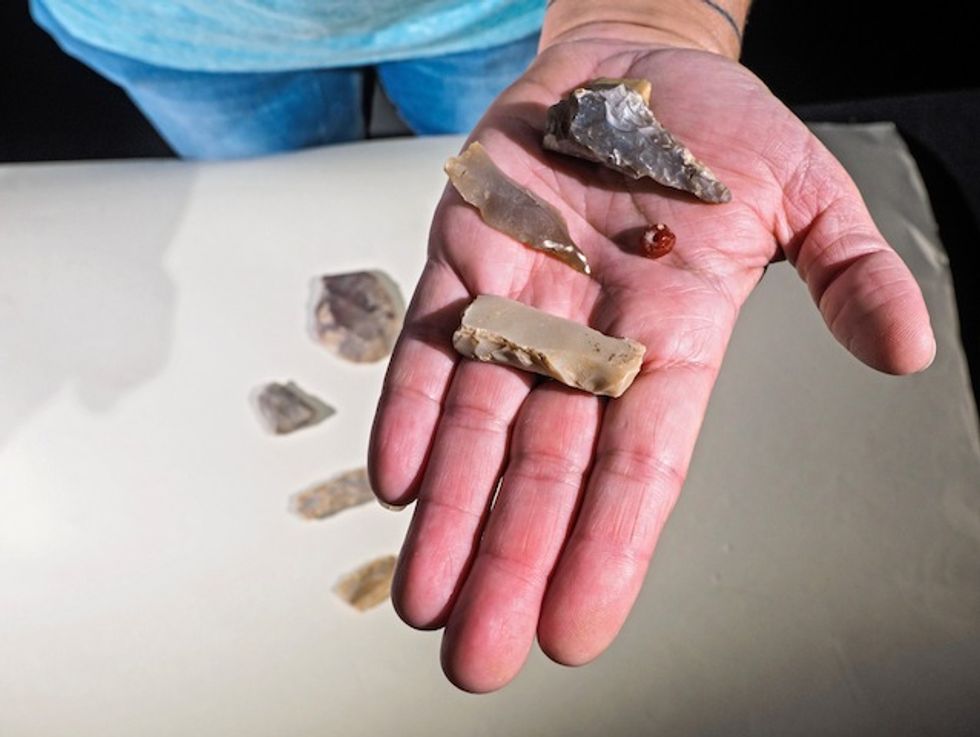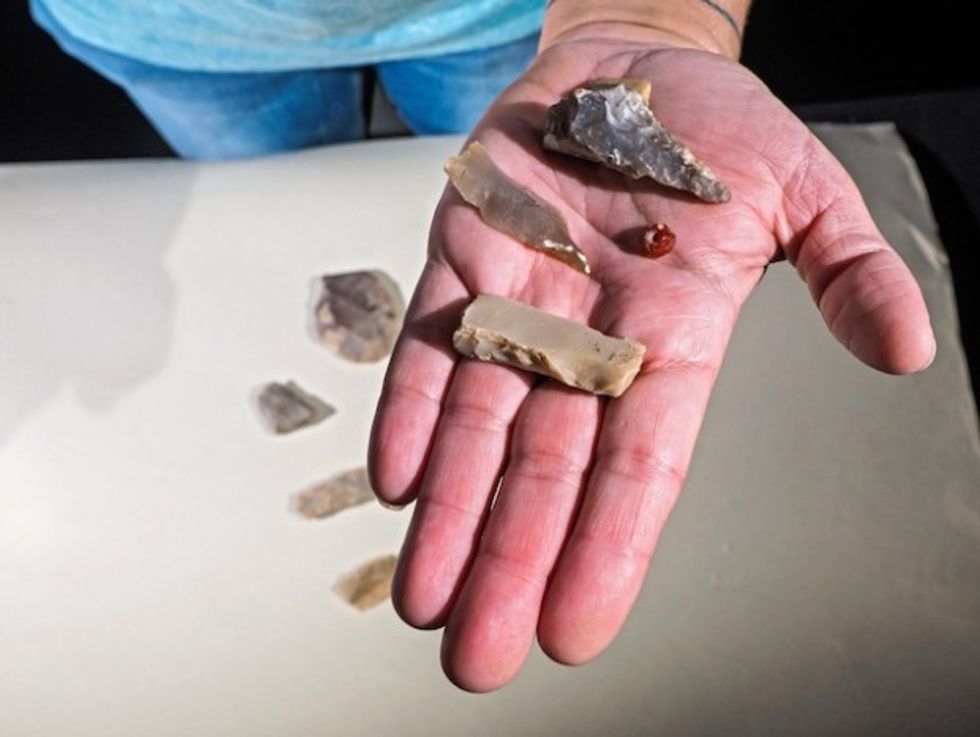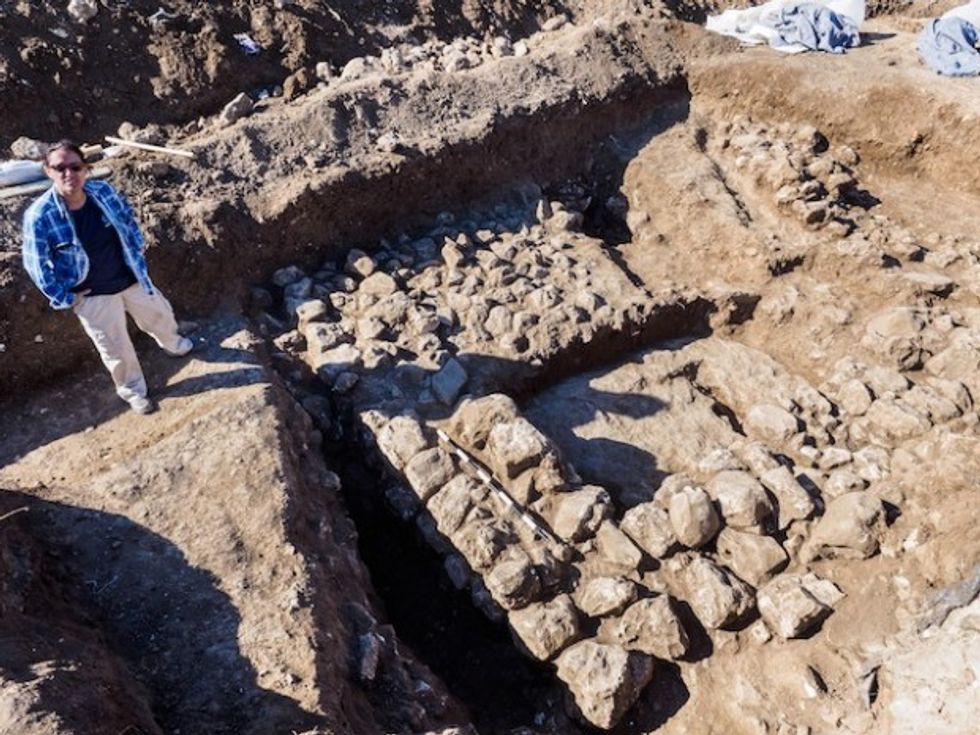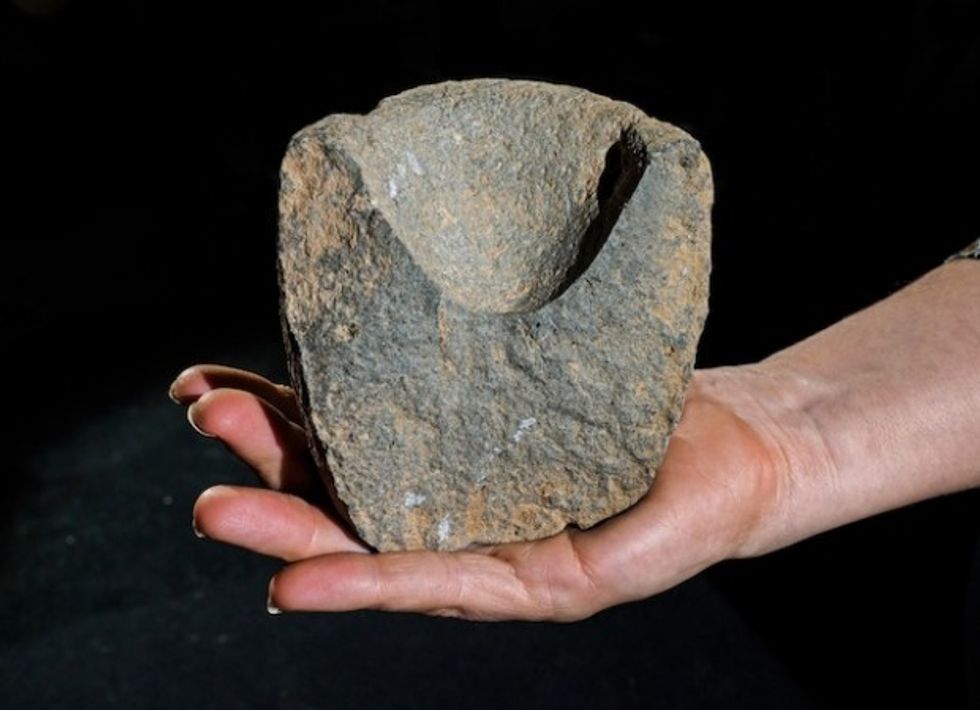
Among the finds were a polished flint axe and blades as well as a gemstone bead. (Image source: Assaf Peretz/Israel Antiquities Authority)

Archaeologists have discovered the remains of a 7,000-year-old settlement in the north part of Jerusalem, the Israel Antiquities Authority announced Wednesday, calling it a “highly significant” find.
The structures are believed to date to the fifth millennium B.C., during the Chalcolithic period also known as the Copper Age, in territory that would one day be part of the Holy Land.

Two well-preserved dwelling houses, including the remains of their floors, were found.
Inside, other items were discovered that shed light on life during that period, including pottery vessels, flint tools and a basalt bowl.
“It is quite evident that there was a thriving settlement in the Jerusalem area in ancient times. Thousands of years later, the buildings uncovered are of a standard that would not fall short of Jerusalem’s architecture,” said Ronit Lupo, director of excavations for the Israel Antiquities Authority.
“This discovery represents a highly significant addition to our research of the city and the vicinity,” Lupo said.

A variety of flint tools were found, which offered insight into the livelihood of the prehistoric inhabitants, such as those used for grinding as well as for artistic endeavors. Lupo described some of the artifacts found:
Small sickle blades for harvesting cereal crops, chisels and polished axes for building, borers and awls, and even a bead made of carnelian (a gemstone), indicating that jewelry was either made or imported. The grinding tools, mortars and pestles, like the basalt bowl, attest to technological skills as well as to the kinds of crafts practiced in the local community. We also recovered a few bones of sheep/goat and possibly cattle; these will be analyzed further in the Israel Antiquities Authority laboratories, permitting us to recreate the dietary habits of the people who lived here 7,000 years ago and enhancing our understanding of the settlement’s economy.
Archaeologists believe that the dwellings were likely lived in for a considerable period of time given the extent of maintenance they appeared to display.
The Times of Israel offered this explanation as to why the find is considered so significant: “The remains predate previously found evidence of human settlement in the area by up to 2,000 years. Before the latest discovery, it was thought that the area was first settled in the early Bronze Age, from around 3,000–2,800 BCE.”
While Chalcolithic remains have previously been found in the southern Negev Desert, on the Mediterranean coast and in the northern Galilee and Golan, that period “is almost completely absent in the Judean Hills and Jerusalem,” said Dr. Omri Barzilai, an expert on prehistory at the Antiquities Authority.
“Now, for the first time, we have discovered significant remains from 7,000 years ago,” he said.

“During the Chalcolithic period, man started using tools made of copper (chalcos in Greek) for the first time while continuing to use tools made of stone (lithos), hence the name given to the period,” the Antiquities Authority explained in a press release announcing the discovery.
The dwellings were found during the initial phases of planning for road construction in the area.